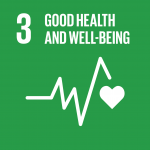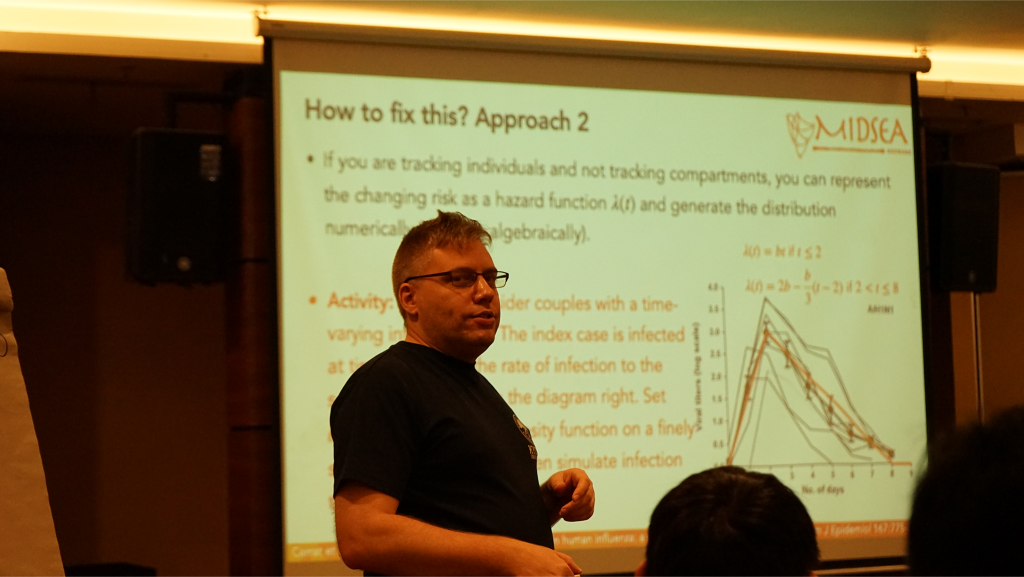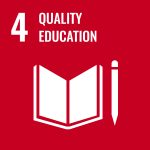The second day of the Simulation Track at the MIDSEA Summer School 2025 on June 24, 2025, proceeded smoothly. Held in the Bima Room at the MICC Building, The Alana Yogyakarta Hotel and Convention Center, the session titled “Sojourn Times and Uncertainty” discussed the unrealistic nature of the standard infectious disease model (SIR), which consists of three compartments or phases: the susceptible phase (S), the infected phase (I), and the recovered phase (R). This is due to the fact that the population size in each phase is not an integer, and the deterministic model does not account for the duration of time an individual spends in a particular phase.
Prof. Alexander Richard Cook, Deputy Dean for Global Health at the Saw Swee Hock School of Public Health, National University of Singapore (NUS), as the track speaker, explained that the unrealistic nature of the standard SIR model also applies to stochastic models. The assumption that the duration of time an individual spends in a disease phase follows an exponential distribution results in individuals entering that disease phase too quickly. This is less appropriate when applied to the incubation period or the sick period, which typically require time before symptoms appear or resolve.
To construct a more realistic SIR model, 14 track participants from various countries such as Indonesia, Thailand, and the Philippines with diverse backgrounds were asked to make three different modifications to the RStudio program code for the standard SIR model provided on the first day. The first modification involved adding two disease-exposed compartments (E) and dividing the disease-infected compartment (I) into three parts. By simulating the modified SIR model and visualizing the duration of the incubation period or illness period in the form of a histogram, it was found that both followed a gamma distribution. Two other model modifications were also made to investigate the duration each individual spends in a phase, by first defining the hazard function and survival function (for the discrete-time model) and then simulating the model using RStudio.
The second Simulation Track session also discussed the differences between uncertainty and stochasticity. In addition to the presentation by Prof. Cook, the Simulation Track also included discussions during the Activity Session, where participants could discuss the given problems with both fellow participants and the speaker. At the end of the Activity Session, Prof. Cook presented the RStudio program code and discussed the solutions to the problems given in front of all participants. The problems on the second day were given so that participants could implement realistic distributions for the SIR model that considered the latent period and incubation period and visualize the differences between uncertainty and stochasticity in a simple infectious disease model.
 Keywords: MIDSEA, Modelling, Infectious Diseases Modelling
Keywords: MIDSEA, Modelling, Infectious Diseases Modelling
Author: Citra Rizqin Sulistyaningsih
Photo: Lucetta Amarakamini


